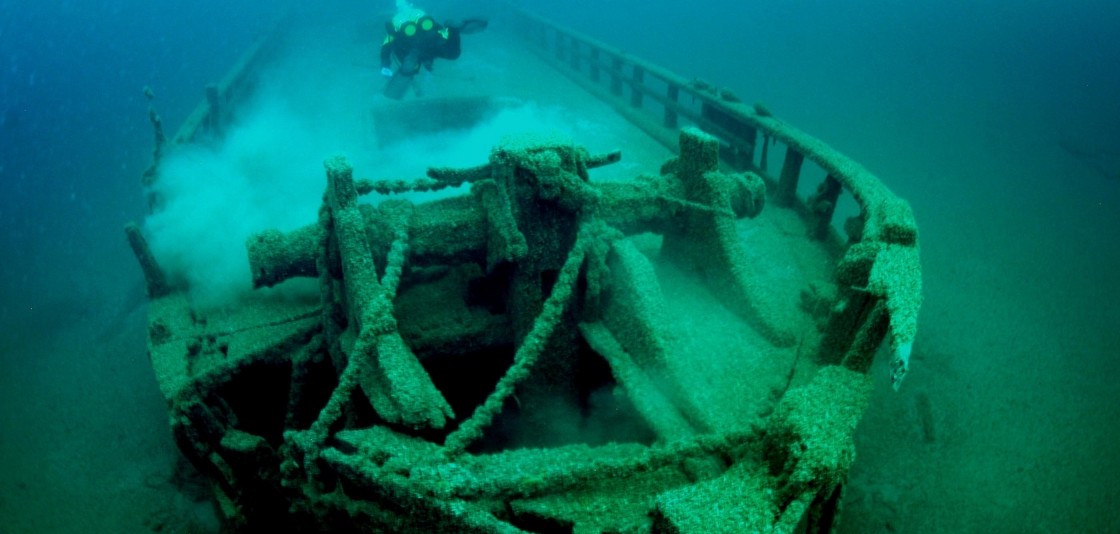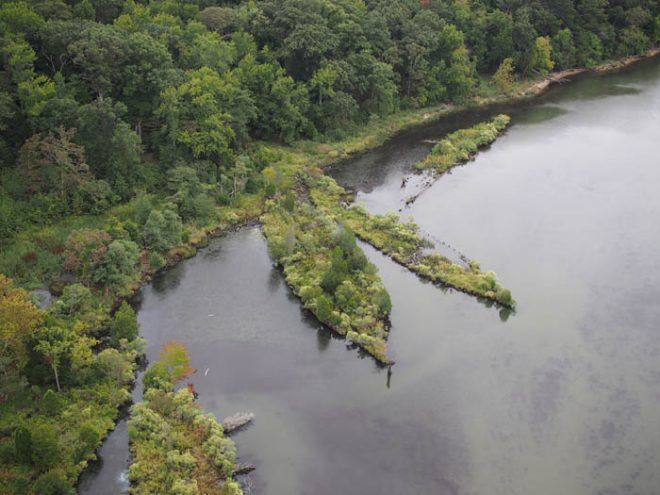
Washington, DC–(ENEWSPF)–January 6, 2017. The public will be able to weigh in beginning Monday, January 9, on two proposals for new NOAA national marine sanctuaries in Wisconsin and Maryland that would protect nationally significant shipwrecks.
The sanctuaries were originally proposed to NOAA in 2014, and if created would be the first since 2000.
In Wisconsin, NOAA is proposing to designate a 1,075-square-mile area of Lake Michigan adjacent to Manitowoc, Sheboygan and Ozaukee counties that holds 37 known shipwrecks including Wisconsin’s two oldest known shipwrecks discovered to date – the Gallinipper (1833) and the Home (1843). As many as 80 shipwrecks are still yet to be discovered in the proposed sanctuary. The ships here played critical roles in the settlement and development of the Midwest during the 19th and early 20th centuries.
In Maryland, NOAA is proposing a national marine sanctuary along a 52-square-mile stretch of the tidal Potomac River, adjacent to Charles County. Mallows Bay contains more than 100 known and still to be discovered shipwrecks, including the remains of “Ghost Fleet” vessels built as part of America’s engagement in World War I, as well as sites related to the region’s Native American cultures and maritime battlegrounds from the Revolutionary and Civil wars.

Mallows Bay in the Potomac River contains more than 100 known and still-to-be-discovered shipwrecks. (Marine Robotics & Remote Sensing, Duke University)
Both potential sanctuaries were proposed to NOAA through its sanctuary nomination process and received broad community and bi-partisan support. Last year, NOAA held public meetings in Wisconsin and Maryland and received comments on potential sanctuary boundaries and resources that could be protected.
How to comment
The public can comment on the proposed sanctuaries online, by mail, or in person at a public meeting.
Online:
Go to the Federal eRulemaking Portal, www.regulations.gov.
- To comment on the proposed Mallows Bay-Potomac River, use docket number NOAA-NOS-2016-0149
- To comment on the proposed Wisconsin-Lake Michigan, use docket number NOAA-NOS-2016-0150
By mail:
- Mallows Bay-Potomac River mailed comments should be addressed to:
Paul Orlando, Chesapeake Bay Regional Coordinator
ONMS Northeast and Great Lakes Region
c/o NOAA Chesapeake Bay Office
410 Severn Ave, Suite 207-A
Annapolis, MD 21403
- Wisconsin-Lake Michigan mailed comments should be addressed to:
Russ Green, Regional Coordinator
Proposed Wisconsin-Lake Michigan National Marine Sanctuary
University of Wisconsin-Sheboygan
One University Drive
Sheboygan, WI 53081
All comments must be submitted or postmarked by March 31.
Public meetings:
NOAA also will host meetings at the following locations on the dates and times specified to answer questions and gather public input:
Maryland:
March 7: 6:00 – 9:00 p.m.: Charles County Government Building Auditorium; 200 Baltimore Street; La Plata
March 9: 6:00 – 9:00 p.m.: Anne Arundel Community College; Center for Applied Learning and Technology (CALT) Building, Room 100; 101 College Parkway; Arnold
Wisconsin:
March 13: 6:30 – 8:30 p.m.: Knudson Hall; 620 Lake Street, Algoma
March 14: 6:30 – 8:30 p.m.: Wisconsin Maritime Museum; 75 Maritime Drive; Manitowoc
March 15: 6:30 – 8:30 p.m.: University of Wisconsin-Sheboygan; Main Building; Wombat Room (Room 2114); 1 University Drive; Sheboygan
March 16: 6:30 – 8:30 p.m.: Wilson House; 200 N. Franklin St.; Port Washington
NOAA will review the comments it receives and make a final decision on the proposed sanctuaries. Should NOAA decide to proceed with sanctuary designation, the agency will develop final documents, including boundaries and guidelines for how the sites will be managed.
Additional media resources are available at http://sanctuaries.noaa.gov/news/press/mallows-bay-and-wisconsin/.
NOAA’s Office of National Marine Sanctuaries serves as trustee for a system of 14 marine protected areas, encompassing more than 600,000 square miles of America’s ocean and Great Lakes waters. Through active research, management, and public engagement, national marine sanctuaries sustain healthy environments that are the foundation for thriving communities and stable economies.
Source: http://noaa.gov








